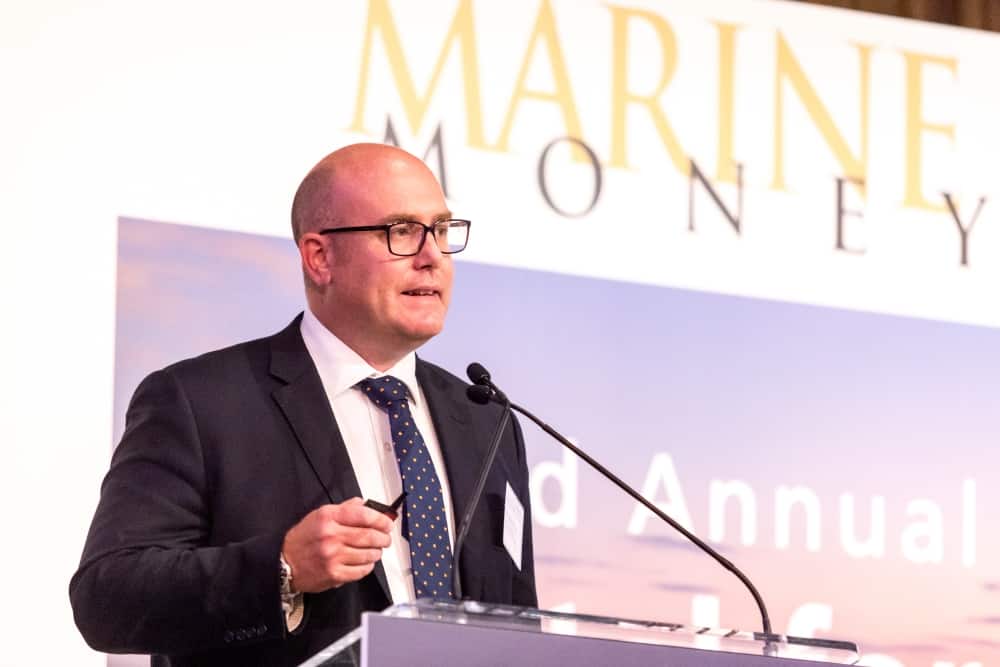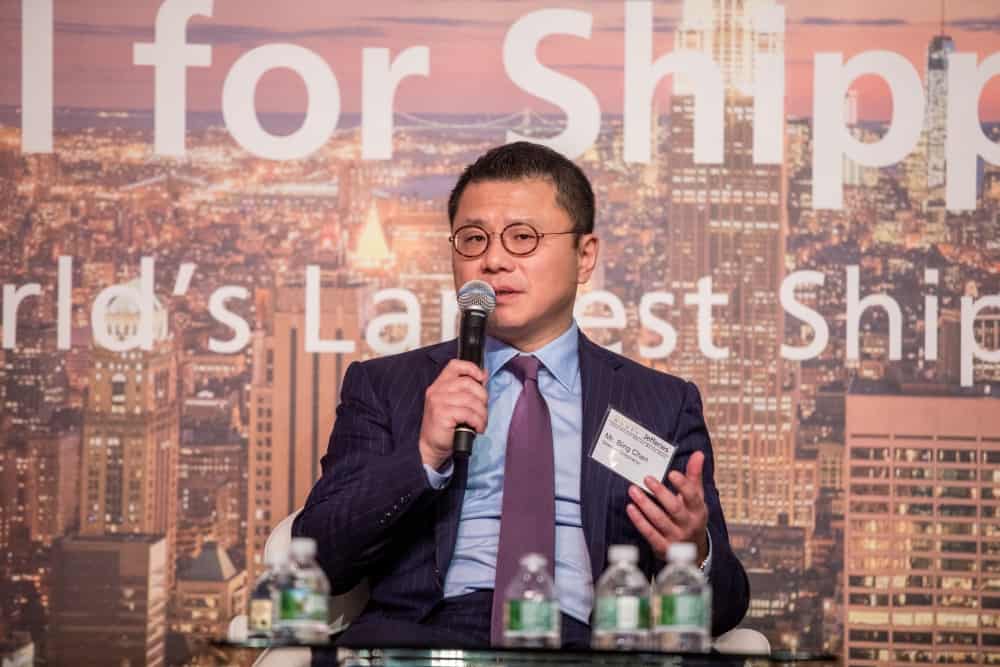Read the headlines on trade wars and tariffs and the clash of wills between the U.S. and China, and you’d think the ocean container-shipping sector is highly volatile – tossed in the center of a storm.
Analysts and executives speaking at the Marine Money Week conference in New York on June 16-19 painted a different and calmer picture.
They maintained that the sector has largely matured, rendering the business less volatile than in previous decades. A trade war is certainly not good, but it’s happening in the context of a steadier ‘new normal.’
According to Bing Chen, chief executive officer of container-ship lessor Seaspan Corp. (NYSE: SSW), “Overall, container growth is about 4 percent per year. With the [trade tension] escalation, the impact is primarily focused on the trans-Pacific, which could have a roughly 6 percent volume decrease, so the net impact [globally versus a non-trade-war scenario] could be roughly about 3 percent.
“We actually still see a continued demand increase from the liner side this year. Even if the volume between China and the U.S. is reduced, the actual goods might be transported to other areas as the logistics flow is changed,” said Chen.
Adam Kent, managing director at forecasting and advisory company Maritime Strategies International (MSI), explained how the evolution of world trade and of the now-consolidated liner market has instilled a landscape of more relative stability versus the past.
New chapter for box shipping
“On the container side, we have already entered a new chapter,” he explained. He noted that the classic relationship seen in the 1980s, 1990s and 2000s was for world trade growth to be around three times GDP growth. “For the past decade, it [the multiple] has been fairly set at 1.5 and we don’t see any changes going forward, so we’re in a new paradigm for the container shipping market,” he said.

“The mainline trades will continue to grow, but where we will see more growth is in the non-main east-west trades and some of the north-south trades. Those are what will really drive container growth over the next three to five years.”
Kent does not foresee another massive wave of newbuilding ordering for container ships, which should keep a lid on capacity growth. “One of the reasons capacity growth will be minimal in the container sector is consolidation,” he explained.
He said that all of the consolidated liner companies now have enough ultra-large ships with capacity for 18,000 twenty-foot equivalent units (TEU) or more “to meet the current requirements” of global trade.
He believes the major liner companies “are more interested at the moment in vertical integration and profitability” than in growth, and consequently, “we shouldn’t see any huge splurges of contracting activity within the sector anytime soon.”
Ports must handle larger ships
The important point for port operators is that average vessel size will still increase, even if there is not another major round of newbuilding orders.
“One thing we do expect to see continue is the efficient use of the ‘cascade’,” said Kent. Cascading refers to the practice of placing newer, larger ships into the highest-volume trade lanes, and shifting down the ships they replace into the next highest-volume lane, and so on.
As ports in various lanes develop the capability to handle larger ships, liner companies replace even more smaller vessels in those lanes with larger ones, because it is cheaper to use one vessel with a capacity for 5,000 TEU than two 2,500-TEU ships.
Data from MSI shows that “upsizing vessels has been almost across the board on each of the routes,” and furthermore, that the average ship size in most trades is significantly lower than the largest single ship to operate in each trade. “So, there is quite a lot of headroom to increase the size of vessels in all of the trades,” said Kent.
More demands on ship lessors

Consolidation among the liner companies has also affected the companies that lease ships to them. A liner company generally owns a portion of its fleet, but also supplements that to varying degrees with vessels that are chartered from so-called ‘tonnage providers,’ whether on long-term, multi-year contracts or shorter contracts.
U.S.-listed companies Seaspan Corp. (NYSE: SSW), Danaos Corp. (NYSE: DAC), Global Ship Lease (NYSE: GSL), Capital Product Partners (NASDAQ: CPLP), Navios Containers (NASDAQ: NMCI), Navios Partners (NYSE: NMM), Performance Shipping (NASDAQ: DCIX) and Euroseas (NASDAQ: ESEA) are tonnage providers to liner companies.
“The consolidation of the liners has been quite significant. In the container space, about seven customers now account for more than 80 percent of market share,” commented Chen.
“From an industry standpoint, it makes for healthier liner companies. They have better scale, better credit quality, better efficiency and better capital allocation. Instead of investing in growing their market share and competing for market share, they can now better deploy their capital along the value chain.”
Chen continued, “For the owner-operators [like Seaspan], you could say that [liner] consolidation has made the customers more demanding.” He believes that to best cater to these new demands, “you need to have a fully integrated platform with your customers. At Seaspan, we look at ourselves as a fully integrated provider of a full spectrum of services to liners, from financing to accounting, to regulatory compliance, operations, technical services, and newbuilding services – the entire life cycle.”
He concluded, “The key implication of consolidation is that if all you’re doing is providing the liners with vessels, you’re really just providing a commodity.”











